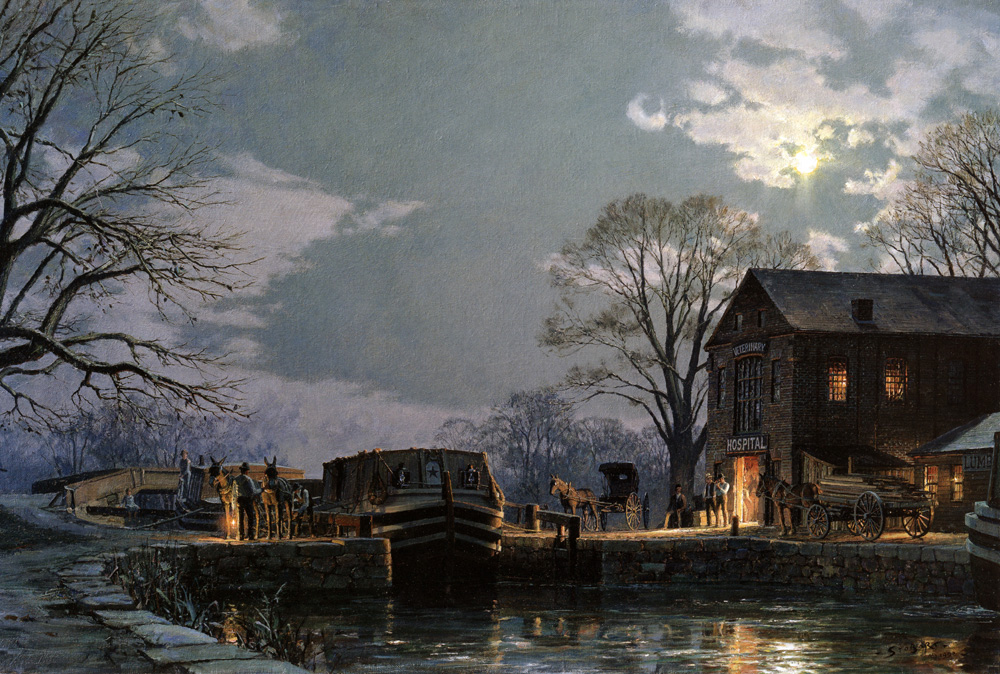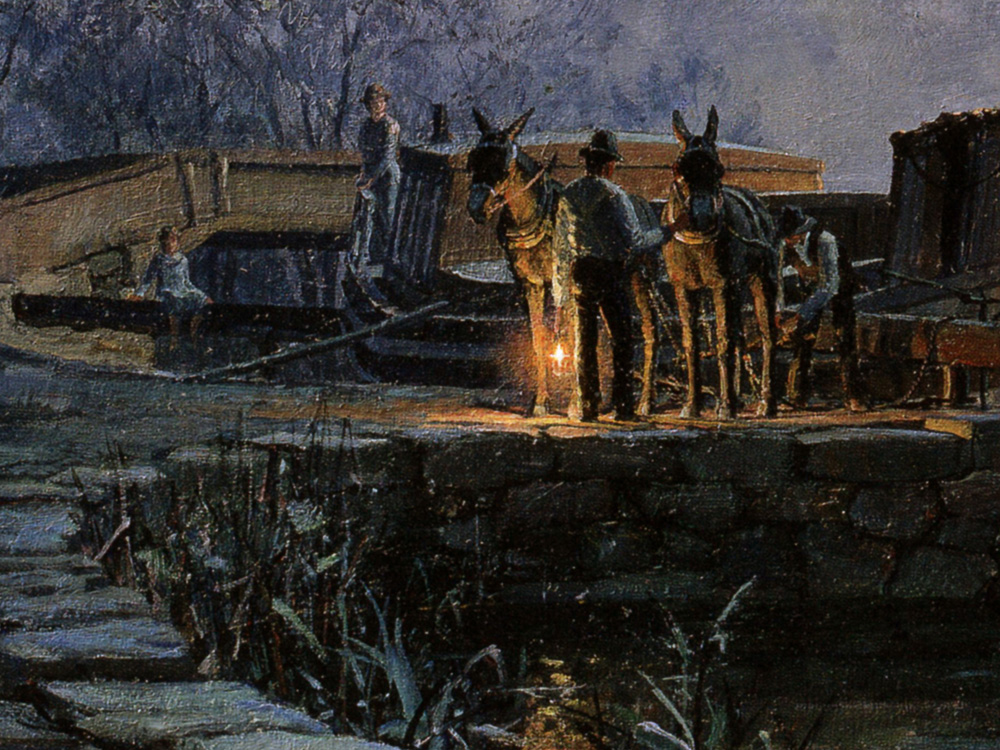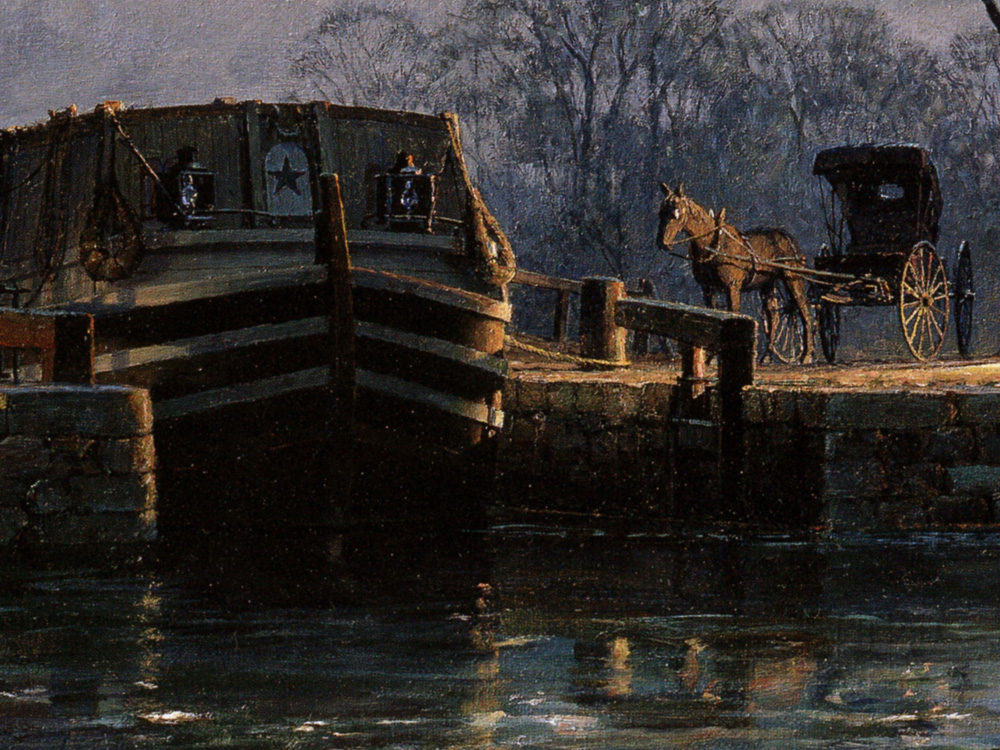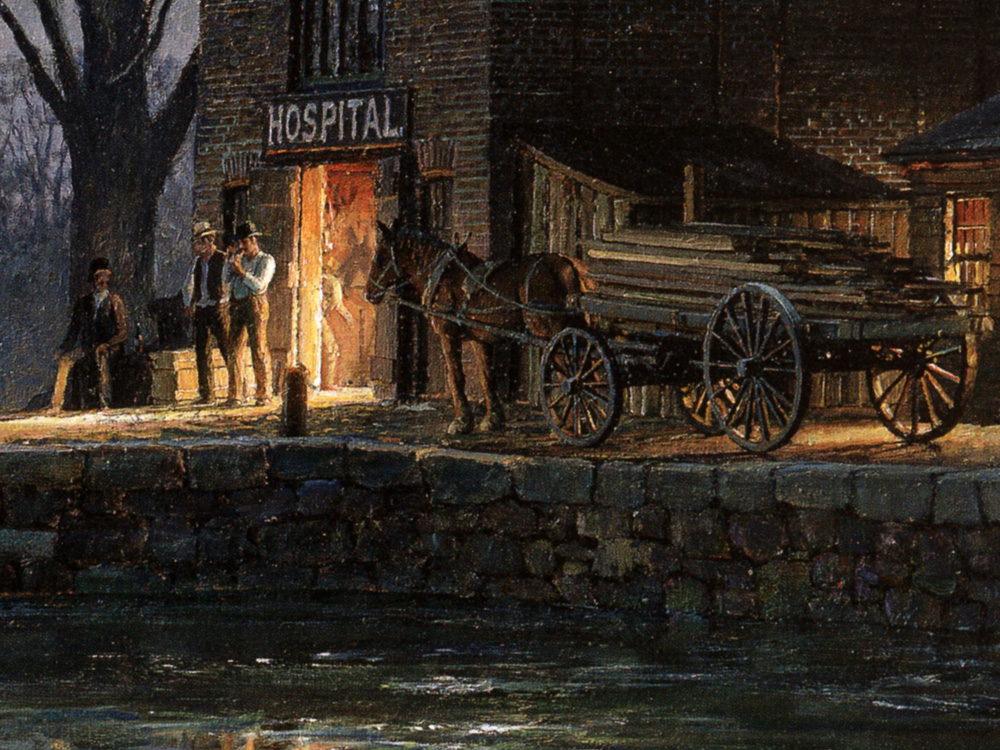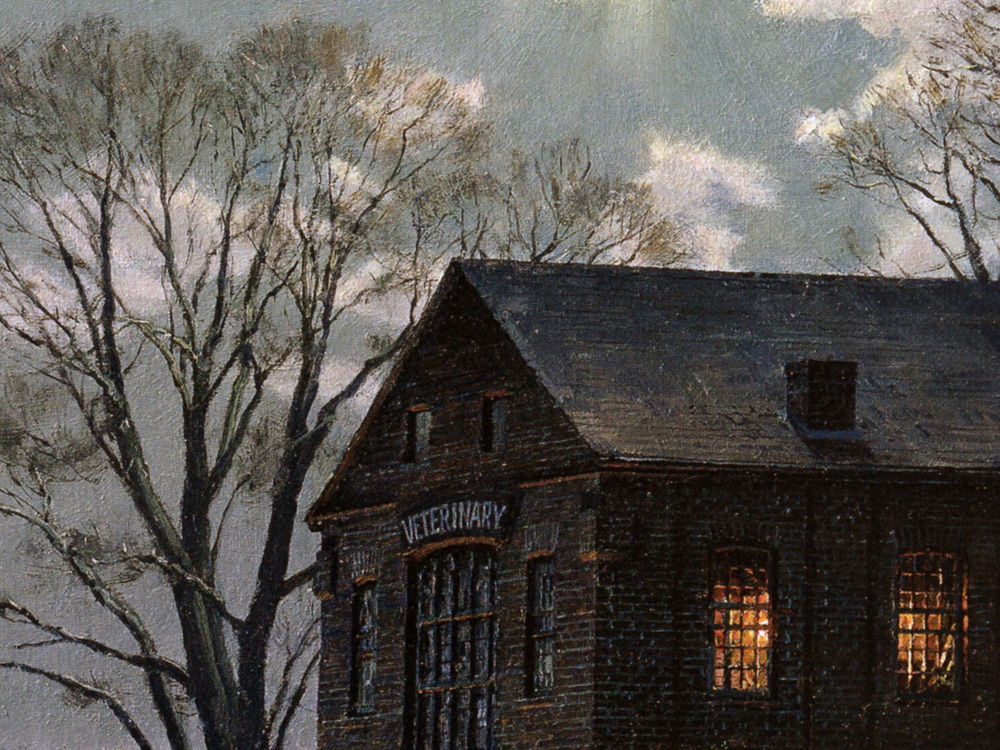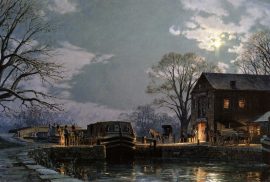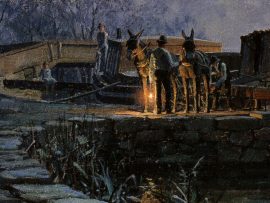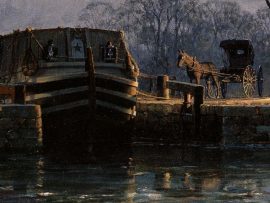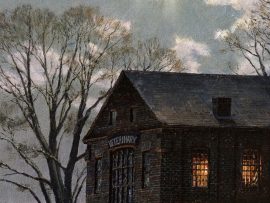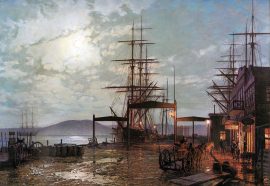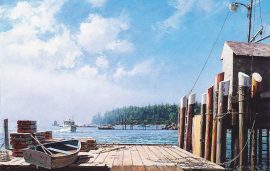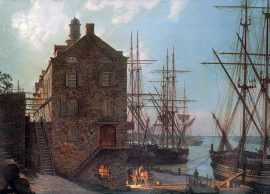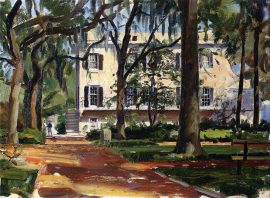Georgetown: Preparing for A Moonlight Departure on the Chesapeake and Ohio Canal, c. 1900
$600.00 Original price was: $600.00.$540.00Current price is: $540.00.
The “Duval Foundry,” which at the turn of the century became a veterinary hospital, is the principal structure in this painting and has fortunately survived the ravages of time. It is well preserved, as are the four locks which lifted the canal barges some 38ft. above the Potomac River. This allows a lock free stretch of several miles before more locks take it to, and beyond the famous tavern and lock house at Great Falls, Potomac.
Work began on the C. & O. Canal in 1828 after the Erie Canal, which opened up interior trading in New York and Pennsylvania, had proved to be such a success. In the latter half of the canal’s viable years the principal cargo was Ohio coal. Old glass plates of Georgetown show how barges unloaded into rail trucks which curved out on high trestles to deep water schooners berthed alongside Georgetown’s Potomac riverfront.
The scene shows a barge in Lock No. 3 preparing to move north on a moonlit night with oil lamps in position ready to be lighted up, and fresh mules being hitched to the barge’s towline. At the forward end of the 80ft. x l4ft. barge (behind the lamps) was space allocated for mules. In normal circumstances three mules towed while the alternate three took a rest. Some fourteen hatches took up the major part of the vessel where cargo was stowed. The family quarters and steering platform were at the stern. It was not unusual for canalers to spend their entire lives in the restricted family quarters measuring some 20ft. x 14ft, and there are accounts of families rearing up to 14 children, “most of which were born on the boat.”
In paralleling the Potomac River for much of its 184 mile length, the canal was found to be vulnerable when severe floods would erode its western bank. Following a devastating flood in 1924 the canal ceased commercial operation. In 1938 it was announced that the 22 mile section of the canal between Georgetown and Seneca was to be “restored to its former physical state as a historic site” under the management of the National Parks Service.
| Weight | 6.00 lbs |
|---|---|
| Catalog: | Stobart-056 |
| Artist: | John Stobart |
| Dimensions: | 19" x 29" |
| Edition: | 850 |

